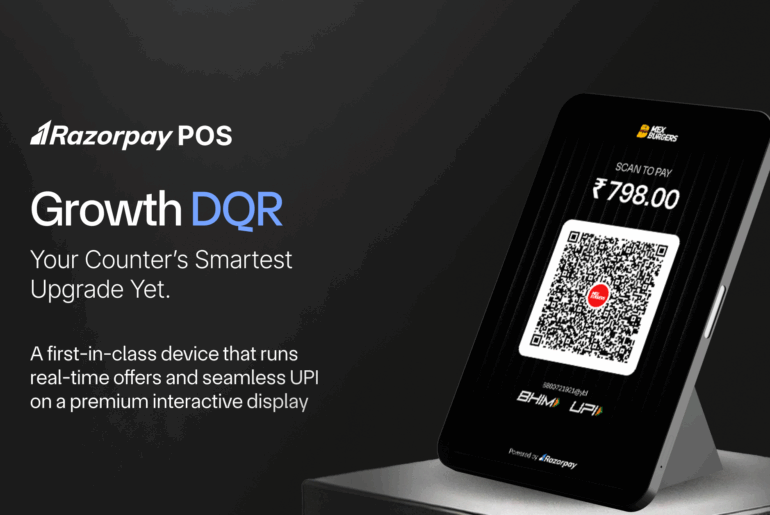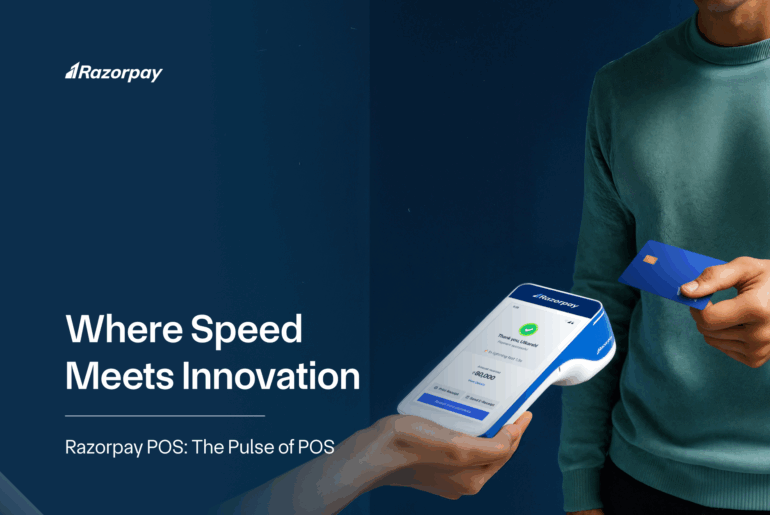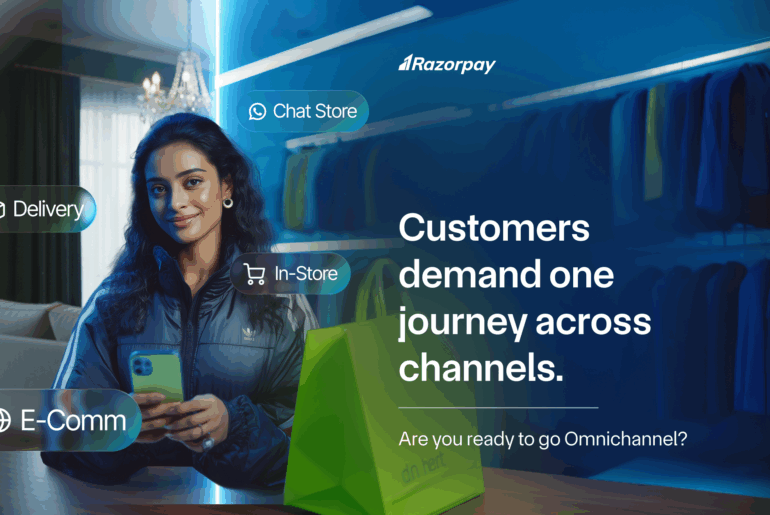Table of Contents
What is Point of Purchase?
A point of purchase (POP) means strategically positioning products at high-traffic locations like checkout counters or POS terminals to capture attention from customers to boost sales
By placing an items where customers are most likely to see them, this strategy encourages impulse buys and maximizes the chances of additional purchases in retail stores.
Related Read: POP vs POS Explained
Point of Purchase Example
In a supermarket, you might see a POP display featuring small, high-margin items like chocolates or magazines placed near the checkout counters or POS Terminals. This point-of-purchase (POP) display encourages impulse buys as customers wait to pay.
How Does Point of Purchase Work?
1. Attention-Grabbing Design
Visually striking POP materials capture customer attention. Bold colours, creative layouts, and eye-catching displays draw customers in, making products stand out in a crowded retail environment.
2. Product Information
POP materials provide key product details, such as features, benefits, and pricing. This information helps customers make informed purchasing decisions quickly, guiding them towards purchasing without needing additional information.
3. Call to Action
Effective POP displays include clear calls to action, encouraging customers to buy now. Persuasive messaging and incentives like discounts or limited-time offers can nudge customers towards making a purchase on the spot.
4. Emotional Connection
POP materials often create emotional connections by appealing to customers’ desires or needs. By associating products with positive feelings, POP encourages customers to choose items that resonate with them emotionally.
5. Point-of-Purchase Influence
POP plays a crucial role in impulse buying. Strategically placed displays can influence customers to make unplanned purchases, increasing overall sales and enhancing product visibility.
Types of Point of Purchase Displays
Point of Purchase Display
1. Countertop Displays
Placed on counters or near checkout areas, these small displays showcase items like impulse buys, accessories, or promotional products.
2. Floor Displays
Freestanding units that are larger and more prominent, floor displays are often placed in high-traffic areas to feature products like seasonal items or new arrivals.
3. Window Displays
Located at the store entrance or windows, these displays attract customers from outside and highlight key products or promotions.
4. Hanging Displays
Suspended from the ceiling, hanging displays draw attention to specific areas of the store or guide customers towards featured products.
Point of Purchase Interactive Displays
1. Digital Displays
Digital screens showcase dynamic content, such as videos, product promotions, or ads, which engage customers and enhance the shopping experience.
2. Touchscreens
Interactive touchscreens allow customers to explore product features, browse catalogues, or customise products, making the shopping experience more personalised.
3. Interactive Games or Quizzes
These interactive POP materials engage customers through entertainment, often offering rewards or discounts for participation, leading to increased engagement and sales.
Point Of Purchase Signage
1. Posters
Large, eye-catching posters are used to promote sales, events, or specific products, often placed in strategic locations around the store.
2. Banners
Banners are versatile and can be used indoors and outdoors to advertise promotions, attract foot traffic, or reinforce brand messaging.
3. Signs
Simple yet effective, signs communicate essential product information, pricing, or promotional details at the point of purchase.
4. Labels
Placed directly on products or shelves, labels highlight key information, such as special offers, product benefits, or price reductions.
Point of Purchase Samples
1. Product Samples
Offering free samples of products allows customers to try before they buy, increasing the likelihood of purchase by reducing perceived risk.
2. Demonstrations
In-store demonstrations show how products work, engage customers, and encourage them to purchase after experiencing the product firsthand.
Related Read: 10 Types of POS Systems for your Businesses
Examples of Effective Point of Purchase Displays
Examples of POP Displays for Retail Stores
1. End-Aisle Displays
Retail businesses often use end-aisle displays to highlight seasonal products or new arrivals.
For example, A clothing store might feature a collection of winter apparel on an end-cap during colder months, drawing customer’s attention as they walk through the store. These displays often lead to higher sales of promoted items due to their high visibility.
2. Product Demonstrations
Live product demonstrations are common in retail, especially in stores selling home goods or personal care products.
For example, A cosmetics retailer might offer live makeup demos, allowing customers to see the products in action and increasing engagement and sales.
3. Interactive Kiosks
Retailers also use interactive kiosks to provide product information and engage customers.
For example, A shoe store may install a kiosk that helps customers find the right size and style, offering a personalised shopping experience that boosts sales and customer satisfaction.
Examples of POP Displays for Grocery Stores
1. Promoting Seasonal Products
- In grocery stores, Point of purchase displays are used to promote seasonal products, such as Halloween candy or summer beverages.
- These displays are often placed near the entrance or high-traffic areas to maximise visibility and encourage customers to stock up on seasonal items.
2. Encouraging Impulse Purchases
- Point of purchase materials in grocery stores frequently target impulse purchases.
- Checkout counters, for instance, feature small displays with items like gum, snacks, or magazines, prompting last-minute additions to the shopping basket.
3. Highlighting New Store Brands
- Grocery stores also use point of purchase displays to introduce and highlight new store brands.
- These displays often feature attractive signage and product samples, encouraging customers to try the latest offerings, which can drive brand awareness and sales.
Examples of POP Displays for Restaurants and Cafes
1. Showcasing New Menu Items
- Restaurants and cafes use point of purchase displays to showcase new menu items.
For example, a fast-food chain might use signage and digital displays to promote a limited-time special, drawing customers’ attention as they place their orders.
2. Highlighting Specials or Promotions
- Point of purchase materials such as table tents, banners, or window posters highlight daily specials, discounts, or promotions.
- This can effectively increase sales by informing customers of current offers as soon as they enter the establishment.
3. Creating a Welcoming Atmosphere
- Point of purchase displays in restaurants and cafés often serve a dual purpose of decoration and promotion.
- A well-designed chalkboard displaying the day’s specials can create a warm, inviting atmosphere while encouraging customers to try new items.
Examples of POP Displays for Electronics Stores
1. Demonstrating New Technology
- Electronics stores often use point of purchase displays to showcase and demonstrate new technology.
For example, a store might have a dedicated area for customers to try out the latest smartphones, laptops, or gaming consoles. These hands-on experiences can drive sales by allowing customers to interact with the products before purchasing.
2. Creating Excitement and Anticipation
- Electronics stores commonly use point of purchase displays that build excitement for upcoming product launches.
For example, posters, banners, and digital displays announcing the release of a new gaming console can generate buzz and anticipation, leading to increased foot traffic and pre-orders.
3. Driving Sales of High-Value Products
- Point of purchase materials are strategically used to highlight high-value products, such as premium headphones or smart TVs.
- Eye-catching displays, paired with product information and demonstrations, can convince customers to invest in higher-ticket items, driving up sales in the store.
Benefits of Point of Purchase
1. Enhanced Brand Visibility
- POP displays help your brand stand out in a crowded retail environment.
- Eye-catching designs and strategic placement ensure your products capture customer attention, strengthening brand recognition and recall.
2. Increased Impulse Purchases
- POP materials are especially effective at driving impulse buys.
- By placing appealing products in high-traffic areas or near checkout counters, you can prompt unplanned purchases, adding to overall sales without significant additional marketing efforts.
3. Improved Customer Engagement
- Interactive POP displays, such as touch screens or product demonstrations, provide customers with a hands-on experience.
- This engagement can make your products more memorable and desirable, leading to higher customer satisfaction and conversion rates.
4. Boost in Sales and Revenue
- Optimised POP placement and design can directly impact your bottom line.
- Effective POP strategies draw attention to your products and persuade customers to make purchasing decisions, leading to increased sales and higher revenue for your business.
Tips for Creating an Effective Point of Purchase
1. Target Audience
- Understanding your target audience is crucial to designing effective POP materials.
- Tailor your displays and messaging to resonate with your customers’ preferences, needs, and behaviours.
For example, a tech-savvy audience might respond well to interactive digital displays, while a younger demographic may prefer vibrant, playful designs.
2. Product Placement
- Strategic product placement is key to maximising the impact of your POP displays.
- Position POP materials in high-traffic areas, such as entrances, checkout lines, or key aisles.
- Ensure your displays are easily visible and accessible to encourage impulse purchases and increase product interaction.
3. Design and Creativity
- Your POP design should be visually appealing and engaging. Use bold colours, clear messaging, and creative layouts to attract attention.
- Ensure your design aligns with your brand image while standing out in the retail environment.
- Creativity in design can make your POP displays memorable and drive customer interest.
4. Call to Action
- A solid call to action (CTA) is essential for encouraging customers to purchase.
- Use clear, persuasive language that prompts immediate action, such as “Buy Now,” “Limited-Time Offer,” or “Try It Today.” Pair your CTA with an incentive, like a discount or free sample, to increase its effectiveness.
5. Measurement and Analysis
- Tracking the success of your POP campaign is vital to understanding its impact.
- Use metrics such as sales data, foot traffic, and customer feedback to measure the effectiveness of your displays.
- Analyse this data to make informed adjustments, ensuring that your POP efforts continue to drive results.
6. Integration with Other Marketing Efforts
- POP displays work best when integrated with other marketing channels.
- Coordinate your POP materials with digital campaigns, social media promotions, and in-store events.
- Consistent messaging across all platforms reinforces your marketing efforts and ensures maximum visibility and engagement for your products.
Challenges in Implementing Point of Purchase
1. Limited Space
- Retail environments often have limited space, constraining your options for POP displays.
- To address this, focus on compact yet impactful displays, such as countertops or hanging displays, which take up minimal space but still attract attention.
2. Competing Messages
- Retail spaces can become cluttered with excessive POP materials from multiple brands, leading to a crowded and confusing environment for customers.
- To combat this, ensure that your POP displays are clear, concise, and visually distinct.
- Collaborate with retailers to avoid overcrowding and strategically place your materials where they will have the most significant impact without competing with other displays.
3. Cost
- Designing, producing, and maintaining POP materials can be expensive, especially for smaller businesses.
- To manage costs, focus on creating high-quality, durable displays that can be reused for multiple campaigns.
- Consider digital POP solutions, which can be updated frequently without constant reprinting or replacement.
4. Measurement and Evaluation
- Measuring the effectiveness of POP campaigns can be challenging, as it’s often difficult to directly link sales to specific displays.
- To overcome this, a combination of methods, such as tracking in-store sales data, monitoring customer engagement through foot traffic analysis, and conducting customer surveys, can be used.
5. Regulatory Compliance
- Depending on the industry and location, various regulations and restrictions may impact your POP implementation.
For example, some regions have strict rules on advertising or display placement. Ensure that your POP materials comply with all relevant laws and guidelines, and stay informed about any regulation changes that could affect your campaign.
Point of Purchase vs Point of Sale
Point of purchase (POP) refers to the promotional displays and marketing efforts within a store aimed at influencing customer buying decisions. However, Point of Sale (POS) system refers to the location where transactions take place, like a checkout counter or POS terminal.
POP materials can be strategically positioned at POS terminals to catch customers’ attention before purchasing. This placement capitalises on the opportunity to drive last-minute impulse buys, effectively turning the checkout area into a key promotional space.
Related Read: POS Machine Charges and Fees for Your Buisness
Example of Point of Sale
In a clothing store, promotional signage positioned at the point of sale (POS) could highlight a buy-one-get-one-free offer. This point-of-sale (POS) promotion boosts sales by encouraging customers to add more items to their cart before completing their purchase.
Conclusion
Point of purchase displays are essential tools for retailers seeking to boost sales and enhance customer engagement. By strategically placing visually appealing materials, businesses can effectively capture attention, encourage impulse buys, and create a memorable shopping experience.
FAQs
1. What is point of purchase marketing?
Point of purchase marketing involves using promotional materials and displays placed at the point of purchase to influence customer decisions and boost sales.
2. Why is point of purchase important?
Point of Purchase is important because it directly influences customers’ buying decisions. Effective point of purchase materials can drive impulse buys, increase product visibility, and enhance overall sales.
3. What is the role of point of purchase in retail?
Point of purchase plays a crucial role in marketing products within the store. It helps to highlight special offers, new products, and promotions, making them more visible to customers as they make their final purchasing decisions.
4. How can point of purchase displays boost sales?
Point of purchase displays boost sales by attracting attention to specific products and promotions at the point of sale. They encourage impulse purchases and enhance product visibility, increasing customer engagement and higher sales figures.


